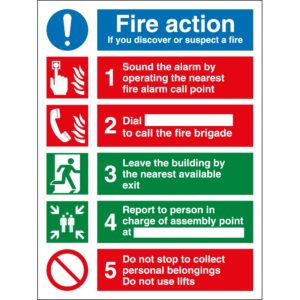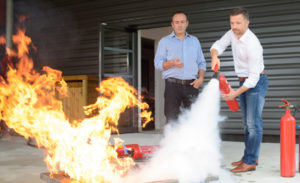Understanding Hazards – Fire
When oxygen mixes with fuel, and there’s a spark or other source of heat, a fire will start.
Once a fire has started, the best way to reduce injury or death is to get people away from it and out of reach of the smoke. However, the best approach is to prevent fires starting in the first place. A fire will only go out when there is no oxygen, the fuel runs out or the heat is removed by cooling with water or another firefighting measure.

Sources of heat: naked flames, cigarettes and matches, heaters, hot processes (grinding, cooking), lighting equipment and friction.
Sources of oxygen: air in the atmosphere, oxidising materials (for example, bleaches) and oxygen stored in cylinders.
Removing any one of these components will prevent or put out a fire.
Fires injure and kill people through:
- heat and flames
- smoke, which can suffocate or poison them
- collapse of buildings.
Once a fire has started, the best way to reduce injury or death is to get people away from it and out of reach of the smoke. However, the best approach is to prevent fires starting in the first place. A fire will only go out when there’s no oxygen, the fuel runs out or the heat is removed by cooling with water or another firefighting method.
As a duty holder, you’ll need to make sure that fire risks in the areas you’re responsible for are managed effectively. To do this, you’ll need to identify:
- ways to eliminate or reduce sources of:
- ignition – for example, buy and install equipment that’s been designed to minimise the risk of fire
- fuel – for example, remove flammable materials or keep them to the minimum amounts you need for the work
- oxygen – for example, shut doors and windows
- how much training your staff have had in fire safety
- what fire precautions are in place, such as smoke detectors, fire alarms, escape routes and firefighting equipment.
You need to have an effective way to detect fires and recover from them if they do start. In particular you need to set up:
- a system for alerting everyone to a fire and evacuating the premises
- regular fire practices to test the emergency systems before a real fire occurs
- adequate firefighting equipment so that trained workers can put out a fire at its early stages without exposing themselves to danger.
A fire risk assessment will help you manage fire risks in the workplace. The fire risk assessment must be carried out by a competant individual and is a legal requirement under the UK Fire Regulations.



